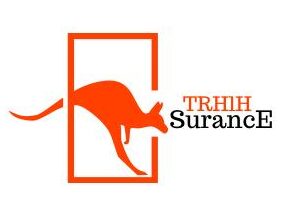Your Path to Debt Relief through State Loan Forgiveness
The weight of student loan debt can be a daunting reality for many graduates. While federal loan forgiveness programs have garnered significant attention, several states offer their own initiatives to help borrowers manage their financial burdens.
This guide will delve into the world of state forgiveness programs, providing essential information to help you navigate the process and potentially find relief.
SEE ALSO ; Personal Finance Guide for millennials
State forgiveness programs are designed to encourage graduates to remain within the state, contributing to the local economy and workforce.
These programs typically offer loan forgiveness incentives for those who work in specific fields, such as education, healthcare, or public service.
the eligibility requirements, benefits, and application processes, which you can determine if you qualify for these programs and take advantage of the opportunities they present.
Truth about State Forgiveness Programs
State forgiveness programs vary significantly in terms of eligibility, benefits, and application procedures. Some programs offer partial loan forgiveness, while others provide complete loan cancellation.
To maximize your chances of benefiting from these programs, it’s crucial to understand the specific requirements of each state.

Factors such as the type of loan, the field of study, and the length of residency within the state often determine eligibility.
Some programs may prioritize borrowers working in specific industries or those who serve in underserved communities. It’s essential to research the programs available in your state to identify the ones that align with your circumstances.
Key States Offering Forgiveness Programs
Several states have implemented robust loan forgiveness programs to support their graduates. Some of the most notable states include:
New York: The New York State Loan Forgiveness Program offers partial loan forgiveness for eligible borrowers working in public service.
California: California offers various loan forgiveness programs, including the California State Teacher Loan Forgiveness Program.
Indiana: The Indiana Teacher Loan Forgiveness Program provides relief for teachers working in high-need school districts.
Minnesota: Minnesota offers loan forgiveness programs for teachers, nurses, and other professionals working in specific fields.
North Carolina: The North Carolina Teacher Loan Forgiveness Program is available to teachers working in low-wealth schools.
It’s essential to note that this list is not exhaustive, and other states may have similar programs. Conduct thorough research to identify the programs available in your state.
How to Apply for State Forgiveness Programs
Applying for a state forgiveness program typically involves completing an application and providing supporting documentation. The specific requirements vary by program, but common documents may include proof of residency, employment verification, and tax returns.
APPLY HERE
It’s crucial to carefully review the application guidelines and submit all required materials to increase your chances of approval. Some programs may have additional eligibility criteria or application deadlines, so staying organized and meeting deadlines is essential.
Benefits of State Forgiveness Programs
State forgiveness programs offer significant financial relief to eligible graduates. By reducing or eliminating student loan debt, borrowers can improve their financial stability, increase their purchasing power, and invest in other areas of their lives.
Additionally, these programs contribute to the state’s economy by encouraging graduates to remain in the state and pursue careers in high-demand fields. By investing in its human capital, the state benefits from a skilled workforce and improved public services.
Challenges and Limitations
While state forgiveness programs provide valuable assistance, it’s essential to be aware of potential challenges and limitations. Some programs may have strict eligibility requirements, such as income caps or specific job titles. Additionally, the amount of loan forgiveness offered can vary significantly.
It’s important to understand that state forgiveness programs are not a guaranteed solution to student loan debt. While they can provide significant relief, borrowers may still need to explore other options, such as income-driven repayment plans or loan consolidation.

Q: Do all states offer loan forgiveness programs? A: No, not all states offer loan forgiveness programs. The availability of these programs varies by state, and the specific eligibility criteria and benefits differ.
Q: Can I qualify for both federal and state loan forgiveness programs? A: Yes, it’s possible to qualify for both federal and state loan forgiveness programs. However, the requirements for each program may vary, and you may need to meet specific criteria for both.
Q: Are there income limits to qualify for state forgiveness programs? A: Some state forgiveness programs have income eligibility requirements. It’s essential to check the specific guidelines for each program.
Program Eligibility
Q: What types of jobs qualify for state loan forgiveness programs? A: The types of jobs eligible for state loan forgiveness vary by program. Common professions include teachers, nurses, law enforcement officers, and social workers.
Q: Do I need to be a resident of the state to qualify for its forgiveness program? A: Typically, you need to be a resident of the state or employed in the state to qualify for its loan forgiveness program. However, specific requirements may vary.
Q: Can I qualify for state loan forgiveness if I work part-time? A: Most state forgiveness programs require full-time employment to qualify. However, some programs may have provisions for part-time workers.
Application and Process
Q: How do I apply for a state loan forgiveness program? A: The application process varies by state. You usually need to complete an application form and provide supporting documentation, such as proof of employment and income.
Q: How long does it take to process a state loan forgiveness application? A: Processing times can vary depending on the state and the volume of applications. It’s essential to allow sufficient time for the application to be processed.
Q: What happens if my state forgiveness application is denied? A: If your application is denied, you will typically receive a notification explaining the reasons for the denial. You may have an opportunity to appeal the decision.
Additional Considerations
Q: Are there any tax implications for receiving loan forgiveness? A: The tax implications of loan forgiveness can vary. It’s advisable to consult with a tax professional to understand the potential tax consequences.
Q: Can I combine state forgiveness with federal loan forgiveness programs? A: In some cases, you may be able to combine state and federal forgiveness programs, but the eligibility requirements for each program must be met.
Q: What if I move to a different state after receiving loan forgiveness? A: The terms and conditions of the forgiveness program may specify whether you need to continue residing or working in the state to maintain the benefits.
Final Words
Navigating the complexities of student loan debt can be overwhelming, but understanding the available options is crucial. State forgiveness programs offer a potential path to relief for eligible graduates. By carefully researching program requirements and completing the application process diligently, you can increase your chances of benefiting from these programs.
Remember to explore all available options and consider seeking professional financial advice to create a comprehensive debt management plan. With determination and perseverance, you can overcome the challenges of student loan debt and achieve financial stability.
Key Takeaways:
- State forgiveness programs offer relief for student loan borrowers.
- Eligibility requirements vary by state and program.
- Careful research and application are essential for success.
- Explore additional debt relief options if needed.
By taking advantage of state forgiveness programs and implementing effective financial strategies, you can work towards a debt-free future.





